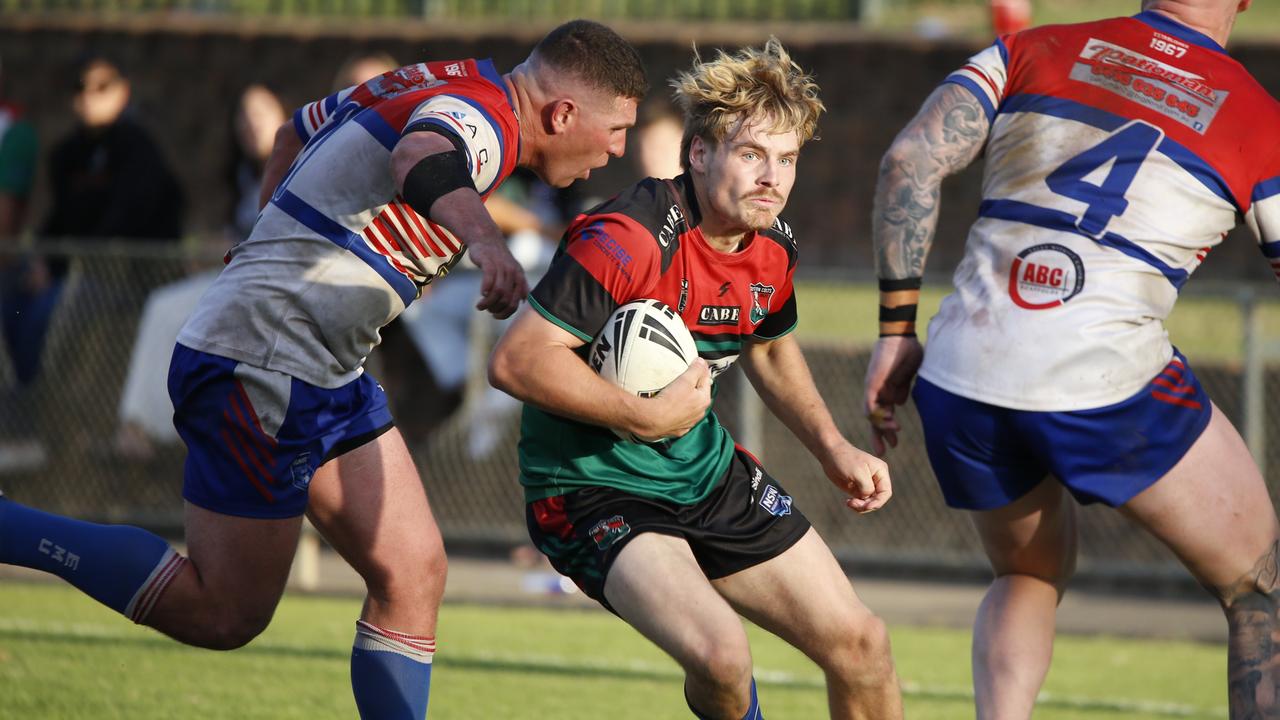Blacktown in pictures: Iconic buildings and streetscapes then and now
Plenty has changed in Blacktown since the colonial days. Today, Blacktown is a booming city of more than 360,000 people. Take a look at the city over time with our sliding gallery,
- Trial of new M4 ramp meter technology to begin at Blacktown on-ramp
- Developers to fight Prospect mosque plans in court
The City of Blacktown has experienced plenty of transformations since the 19th Century.
During early colonial times, the region was known as ‘Blacks Town’ until officially becoming known by its contemporary name, Blacktown, in 1862.
Home to the Darug people for thousands of years, after European settlement, Blacktown was highly sought after for its farming land and its vast timber resources.
The construction of a railway line through Blacktown marked the beginning of the area’s rapid transformation, which would see it quickly transformed into a thriving commercial centre with a school, shops and hotel.
Since this time, the population of Blacktown has surged from a few hundred to more than 360,000 today.
With this growth, buildings have come and gone to make way for roads, housing estates, shopping centres and soon, the city’s first university campus.
Blacktown Rd
One place that is hardly recognisable from colonial times is Blacktown Rd. Once a dirt track with barely a building in sight, the road today is an important transport link, lined with shops, houses, Blacktown TAFE and Blacktown Hospital. In the early days, the road was an important connection to Richmond and Windsor. Due to its proximity to the railway line, the town’s first businesses popped up along Blacktown Rd in the late 1800s, which would spur on the development of the Blacktown CBD at the turn of the century.
Blacktown Station
The Blacktown railway line was opened as Blacktown Rd in 1860, stretching from Parramatta to Penrith. It was one of the first towns in the colony with a railway connection and would become an important railway junction, with many of the town’s first businesses developing along the line. The station was renamed Blacktown in 1862. The station underwent a major rebuild in the 1990s and was reopened in 1995 by then prime minister Paul Keating.
Blacktown Public School
Built in 1877, Blacktown Public School is the oldest-surviving structure in the Blacktown CBD. Prior to this time, the population was not large enough to sustain a public school, but only a few years after its opening, in 1882, another classroom was added. This growth continued until 1915, when further classrooms were built. It was at this time that the nearby School of Arts building was used to keep up with the population. In the late 1950s, the school’s population began to decline as other schools were built in the region. In the 1980s, the school’s newer buildings were demolished to make way for the expansion of Westpoint. In 1990, the school was closed and in 2007, was reopened as the Blacktown Visitor Information and Heritage Centre.
Blacktown Council building
The first permanent Blacktown Council office was opened on the present-day Flushcombe Rd site in June 1912. A new red brick council chambers was constructed in front of it and opened in 1939. The Blacktown Civic Centre opened next door in 1961 and the old council buildings were converted for other council purposes. Both buildings were demolished in 1984.
Bow’s Restaurant, Blacktown
Bow’s Restaurant was an iconic place for diners in Blacktown for close to 70 years before it was demolished earlier this year to make way for Blacktown Council’s CBD transformation project. The Bow’s building was one of the oldest in Blacktown, built at 91 Main St in 1925. Bow’s Chinese Restaurant opened at the site in 1975 by the Bow brothers, Leo and Steven. Prior to that, Leo ran a milk bar called Bow’s Cafe. Fans of the restaurant have been assured Bow’s will open its doors again, with plans for a new restaurant underway. Until its demolition this year, the Bow’s building was the likely the last remaining heritage building in the Blacktown CBD.
Robin Hood Inn, Blacktown
The Robin Hood opened in the Blacktown CBD in 1937 and stood as a prominent landmark for almost 50 years. The Robin Hood was built in a traditional English Inn style and was demolished ‘overnight’ in 1984. State Government office buildings were constructed in its place. A replacement tavern would not open in the CBD until three years later in 1987 with the construction of Patrick Mall.
Commonwealth Bank, Blacktown
Westfield Pl, Blacktown
In 1959, the opening of Westfield Pl saw Blacktown became home to one of the first shopping centres in Australia. Major department store Snow’s opened on the corner of Flushcombe Rd and Westfield Pl the year prior, stimulating the growth of retail along Flushcombe Rd. Westfield Pl was anchored by Winns department store and included a supermarket and 12 shops centred around a courtyard. Little remains of Westfield Pl after much of it was demolished to make way for Westpoint. Winns was later converted into Max Webber Library before it was demolished to make way for the redevelopment of Westpoint in the early 2000s.
Blacktown Civic Centre and Bowman Hall
The Blacktown Civic Centre and Bowman Hall opened in Campbell St in the 1960s. It was named after Mrs Bowman, who donated money for the land on which the Blacktown School of Arts was built. The site was popularised in the 1970s when former Australian prime minister Gough Whitlam gave his famous ‘It’s Time’ election campaign speech at Bowman Hall in 1972. Former Labor leader Bill Shorten returned to the Hall during the 2019 Federal Election, invoking memories of the famous Labor speech. Today, Bowman Hall remains a popular venue for functions, shows and community events.
Westpoint, Blacktown
The construction of Westpoint was one of the biggest transformations witnessed in the development of the Blacktown CBD. Westpoint opened in 1973, featuring Grace Bros and more than 100 stores. Austral St and dwellings on the Western side of Patrick St disappeared as part of the development. It also marked the end of much of Westfield Pl, with many buildings demolished as part of Westpoint’s 2003-2005 extension and redevelopment. These extensions saw it absorb much of Patrick Street, Patrick Mall, Central Plaza and the original Blacktown Public School.
Alpha St, Blacktown
Blacktown bowling alley, First Ave
Boomerang Pl, Seven Hills
The shops in Boomerang Pl, Seven Hills have changed since significantly since the 1950s. It took some time for the suburb to build a shopping centre with the construction of The Centre Seven Hills left up to the Housing Commission of NSW. According to the Prospect Heritage Trust, a woman called Alice Best purchased the majority of the shops around The Centre. A baby health clinic was built some time later across the road and remains there today. The shops are still standing in the present day.
With thanks to the Blacktown and District Historical Society for kindly providing many of the historical images used in this article.


